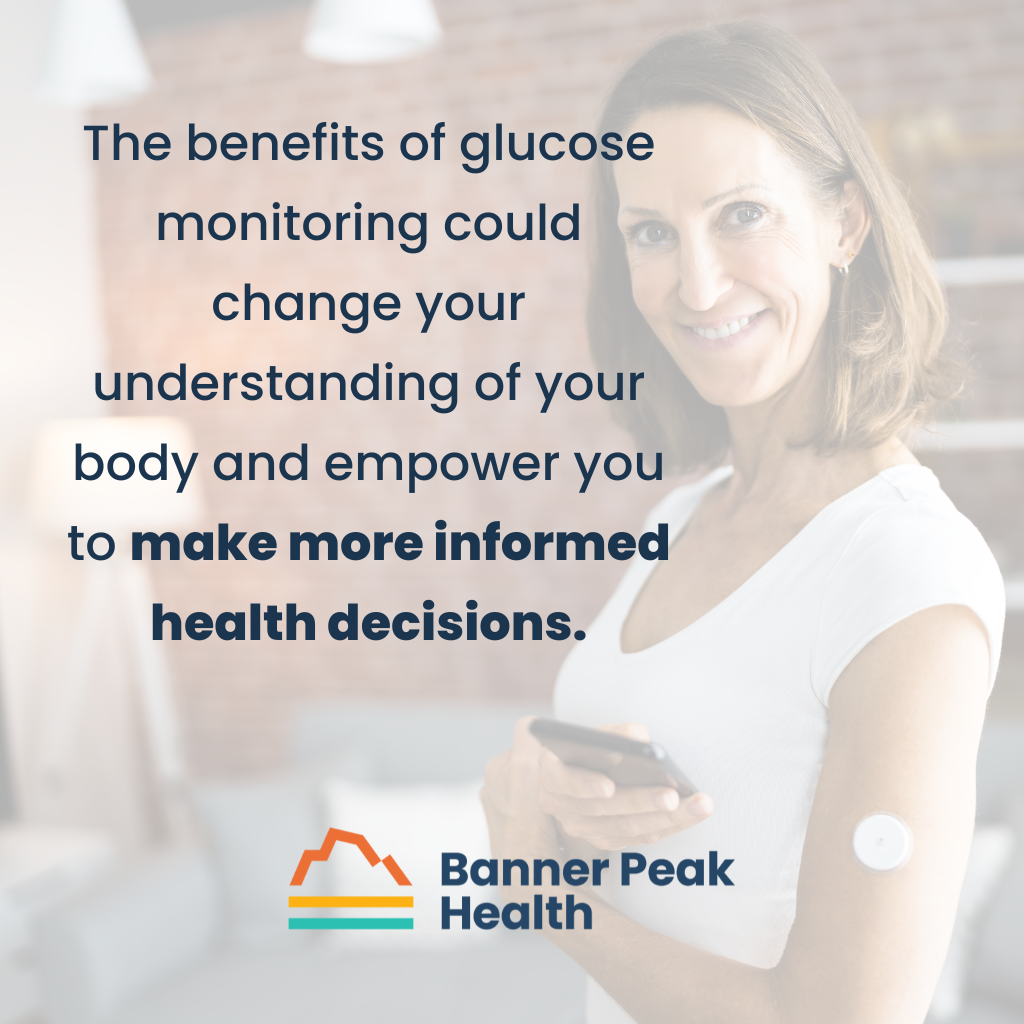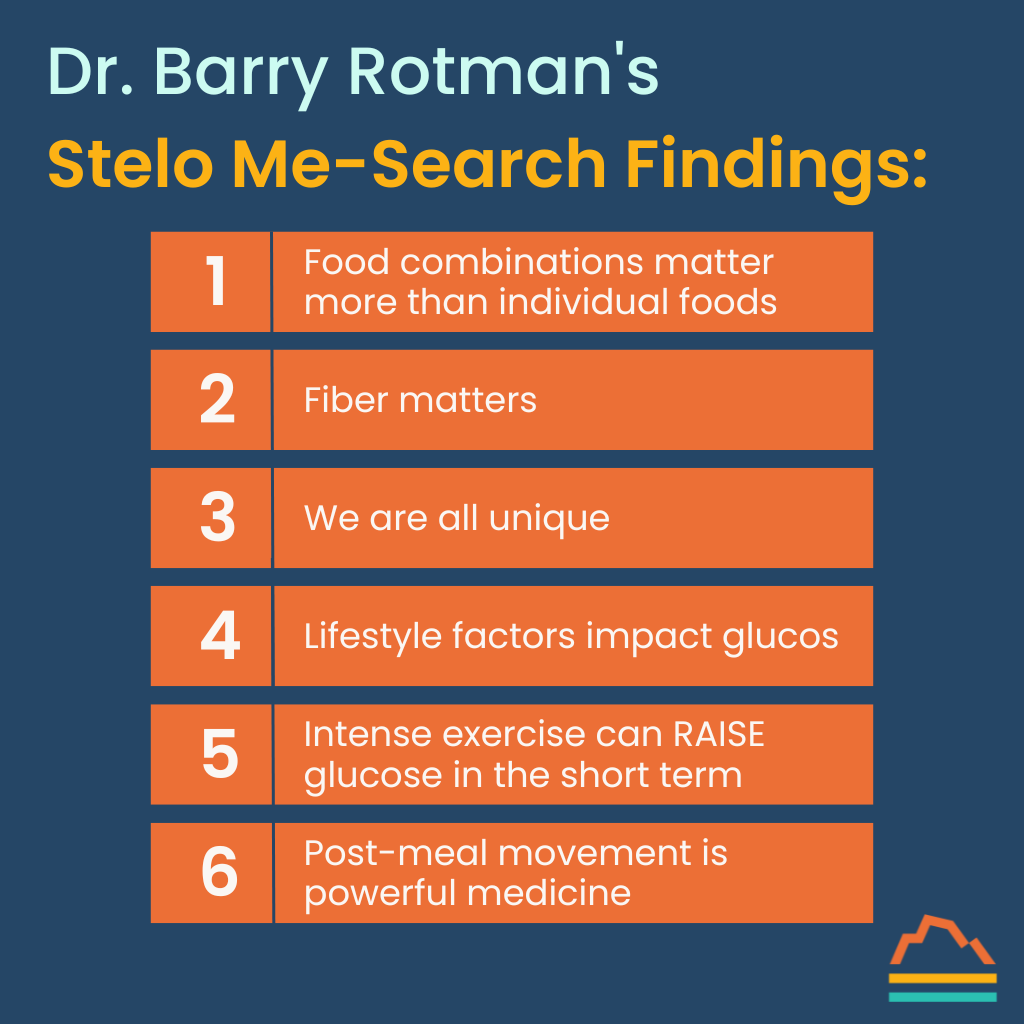I see them everywhere — small white dots on triceps at the gym, the beach, and even medical conferences. Continuous glucose monitors have become the latest health trend, with Dexcom’s new over-the-counter Stelo leading the charge.
As a physician committed to preventative health, I embrace “me-search” — using myself as a subject in N=1 trials to better understand the latest healthcare technologies.
My latest experiment? Testing Stelo for myself to understand the benefits of continuous glucose monitoring (CGM).
The Metric-Driven Empowerment Cycle
Human nature drives us to improve what we measure. When we assign a number to something, we try to beat it. The Metric-Driven Empowerment Cycle (MDEC) leverages this tendency to create lasting health improvements.
Let’s break it down:
- Metric — The quantifiable number that measures your current state.
- Driven — The motivation to improve that number.
- Empowerment — The active process of making changes. You have the power to change these numbers — this isn’t passive.
- Cycle — This isn’t a one-time measurement but a repeating process. You measure, improve, and feel accomplished, which motivates you to continue.
We see this cycle in action every day. My wife tries to take 10,000 steps a day. Patients step on our scale, motivated by the number they see. These metrics create measurable paths toward improvement.
This cycle is particularly powerful when combined with the benefits of continuous glucose monitoring, as CGM provides immediate feedback that drives behavior change.
Why I Tried Stelo CGM
With borderline glucose levels in my own tests (fasting glucose of 104–106 and A1c of 5.6), I was a perfect candidate for Stelo.
While my numbers fell within the “normal” range, they sat at the upper boundary. Research shows cardiovascular risks begin increasing at A1c levels as low as 5.4 — meaning a population with “high-normal” results still faces health risks.
Until recently, CGMs required prescriptions. Dexcom previously manufactured only the G7 device (prescription only) but now offers Stelo for over-the-counter purchase, with key differences:
- Stelo lasts 15 days (G7 lasts 10).
- Stelo reads glucose levels every 15 minutes (though my device gave five-minute readings).
- Stelo reads glucose levels between 70–250 mg/dL (G7 ranges from 40–400).
- Stelo targets pre-diabetics or those wanting to optimize metabolic health.
From Static to Dynamic Health Monitoring
Traditional testing offers a snapshot — a single moment frozen in time. Consider the difference between an EKG and a stress test. One shows a photo; the other displays the whole movie.
One of the key benefits of continuous glucose monitoring is the shift from static to dynamic measurement. While traditional glucose monitoring only provides occasional snapshots (e.g., finger-stick tests, which show your level at one moment), the benefit of continuous glucose monitoring is that it reveals how your body responds to food, stress, sleep, and exercise in real time.
Over 100 million Americans have either diabetes or pre-diabetes, and most don’t know it. One study examined 60 individuals who tested normal through traditional measurements. When evaluated with CGM, 25% showed pre-diabetic patterns.
My Stelo Me-Search Findings
Stelo attaches to the back of your arm — the visible dot that’s becoming common — and pairs with a smartphone app. I learned a lot:
1. Food combinations matter more than individual foods
The glycemic index, describing how much blood sugar rises with each food, is inadequate in that it fails to account for what other foods are consumed at the same time. I tested this directly by eating my favorite dessert (halva, a Middle Eastern sweet made from glucose and sesame) on an empty stomach, causing a dramatic glucose spike. Eating the same treat after a meal produced a much smaller increase. Protein, fat, and fiber slow glucose absorption, dampening spikes.
2. Fiber matters
For example, apples and apple juice create different glucose responses. The fiber in whole fruit slows absorption and reduces spikes. I wore my Stelo during the Jewish holiday of Passover and followed the tradition of eating matzah, unleavened flatbread. The white matzah is made from refined wheat with less than one gram of fiber per piece. These shot my glucose up way higher than the whole wheat variety with 3 grams per piece.
3. We are all unique
The glycemic index also fails to account for individual variation. Yes, certain sugar-containing foods, especially beverages, will spike nearly everyone’s serum glucose. However, each of us processes our own response to different foods. My blood sugar response to a banana may not be that of yours.
4. Lifestyle factors impact glucose
Family stress elevated my glucose levels even with identical food intake. Sleep deprivation similarly increased my numbers. During a recent flight, the call went out for a doctor on the plane. I volunteered and assisted a young man who had fainted. My Stelo logged a spike beginning the exact moment of the call. Our metabolic health responds to everything, not just what we eat.
5. Intense exercise can RAISE glucose in the short term
Overall, exercise is one of the best methods for improving metabolic health. I was surprised to see elevations above the normal range during maximum biking efforts. The body’s hormonal efforts to provide enough energy for intense exercise can transiently raise the blood sugar until it is utilized by the muscles.
6. Post-meal movement is powerful medicine
After one lunch that raised my glucose levels, I took a walk. My numbers dropped by half in less than 30 minutes.
This dramatic response visually confirmed that walking after meals improves glucose control — 80–90% of glucose goes to muscles, so movement accelerates this process.
These insights demonstrate the comprehensive benefits of CGM for understanding personal metabolism. Continuous glucose monitoring reveals patterns that occasional blood tests could never detect, empowering users to make informed health decisions.
The Stelo App Experience
The Stelo app connects with Dexcom’s Clarity platform, allowing patients and physicians to analyze patterns and correlations. We can examine time in target range, daily patterns, and specific responses to foods or activities.
The note-keeping feature lets you record what you ate, stressful events, or exercise, creating a picture of your metabolic health.
Why Banner Peak Health Embraces Stelo
At Banner Peak Health, we look for nooks and crannies of cardiovascular risk that conventional medicine often misses. Insulin resistance is a significant yet often-overlooked risk factor we can now identify and mitigate, lowering the risk for atherosclerosis as well as progression to diabetes.
The benefits of continuous glucose monitoring are now a powerful tool for preventative medicine, even in non-diabetics — not just treating disease but preventing it through real-time feedback and targeted lifestyle modifications.
Today’s Takeaways
You don’t know something until you experience it yourself. My time with Stelo taught me more about my metabolic health than years of occasional blood tests.
As those little white dots become increasingly visible on arms everywhere, consider adding your own. The benefits of glucose monitoring could change your understanding of your body and empower you to make more informed health decisions.


Barry Rotman, MD
For over 30 years in medicine, Dr. Rotman has dedicated himself to excellence. With patients’ health as his top priority, he opened his own concierge medical practice in 2007 to practice medicine in a way that lets him truly serve their best interests.




